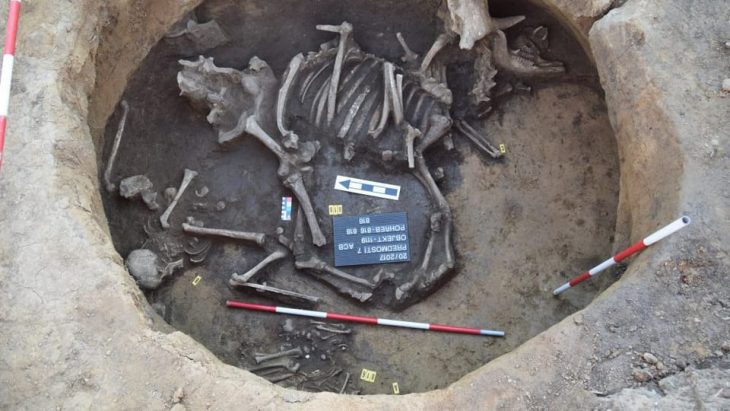Four years of meticulous excavation in the Moravian city of Perov, Czech Republic, have yielded a treasure trove of archaeological finds, rewriting our understanding of the region’s prehistoric past. Led by the Olomouc Archaeological Centre, the project, initiated in anticipation of highway construction, has concluded, leaving behind a legacy of over 4,700 unearthed objects and 150 burial sites.
One of the most captivating discoveries revolves around enthroned deities, a recurring theme in late Stone Age Neolithic art. Dr. Jaroslav Peška, a leading archaeologist involved in the project, expressed his delight: “Our digs surpassed expectations. We now know Perov held at least three fragments of enthroned god statues.”
These fragments represent distinct periods within the Neolithic era. The oldest, dating back to around 6,000 BCE, belongs to the Linear Pottery culture, identified by characteristic decorative features. Two other fragments, attributed to the Lengyel culture (5,000 to 3,400 BCE), famed for richly painted pottery in Moravia, are slightly younger. Notably, one fragment includes a rare leg belonging to the enthroned deity.
Dr. Peška explains the significance of these enthroned figures: “Neolithic civilizations commonly depicted their deities seated. These were primarily female representations, though neighboring Hungary has yielded evidence of male deities as well.” He further highlights the rarity of ceramic thrones within the Lengyel culture, linking them to similar seated statues found across Moravia.
Another groundbreaking discovery is a fortified settlement dating back a staggering eight millennia to the Linear Pottery period. This well-preserved site, featuring a ditch and a wall, has the potential to rewrite our understanding of early settlements in the region. Dr. Peška emphasizes the significance of this find: “If we can link the enthroned deity fragment to the settlement, Perov could become even more special. Defensive structures from this period are rare, and this settlement ranks among the top 4-5 most intriguing sites in Moravia.”
The excavations also unearthed unique burial sites belonging to the Lengyel culture. Deviating from traditional tombs, these resemble long trenches filled with an abundance of pottery. Dr. Peška describes this as an archaeological first in Moravia, hinting at previously unknown burial practices.
The sheer volume and variety of these discoveries paint a vivid picture of life in prehistoric Perov. From the reverence for deities depicted in enthroned figures to the intricacies of defensive structures and unique burial practices, Perov offers a captivating glimpse into a bygone era. As researchers delve deeper into the unearthed artifacts and sites, we can expect even more fascinating revelations about the lives of our Neolithic ancestors.
